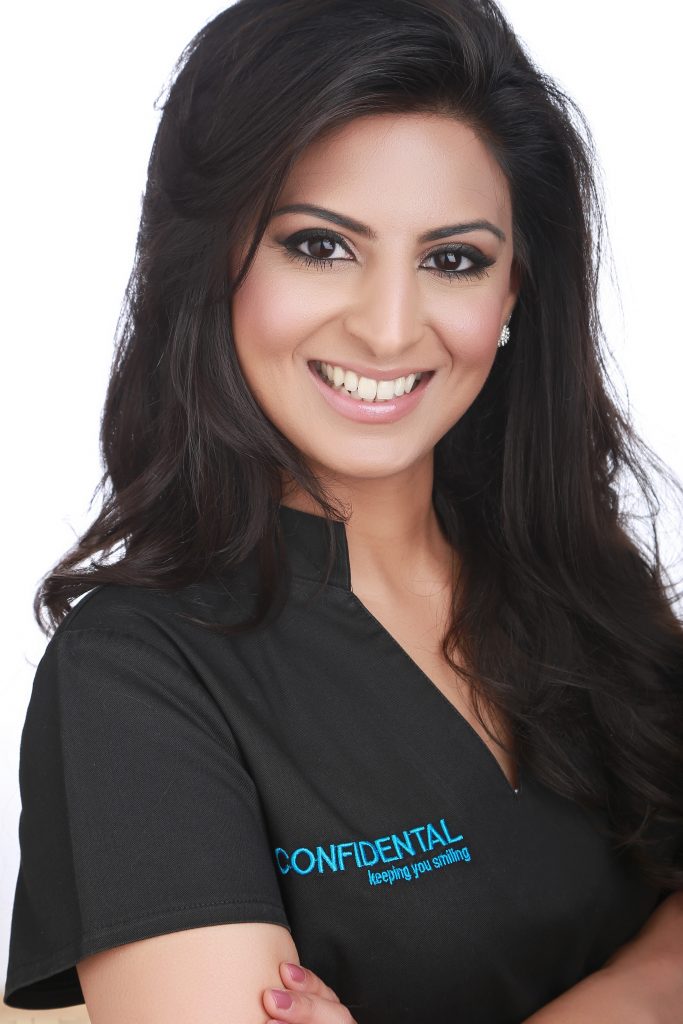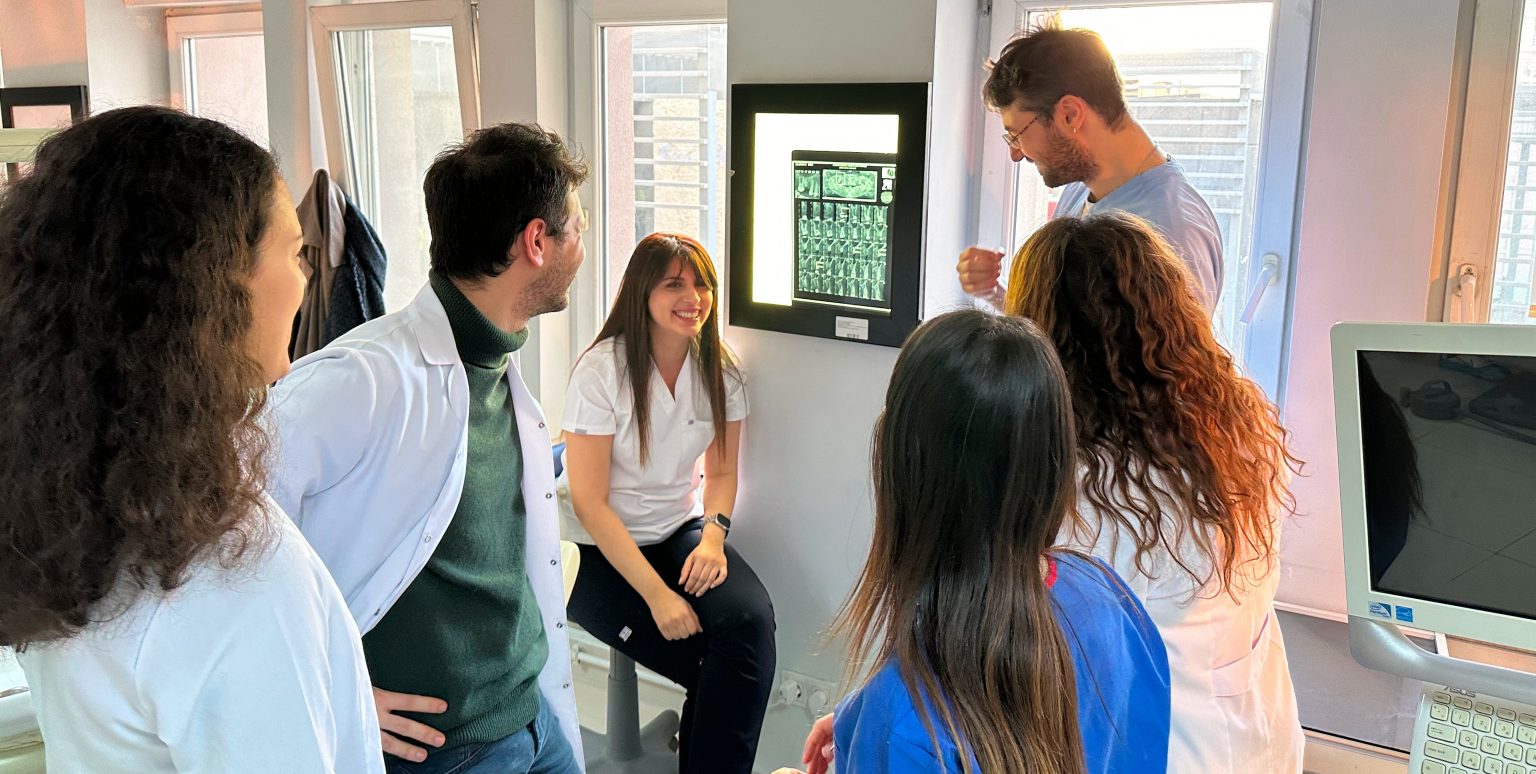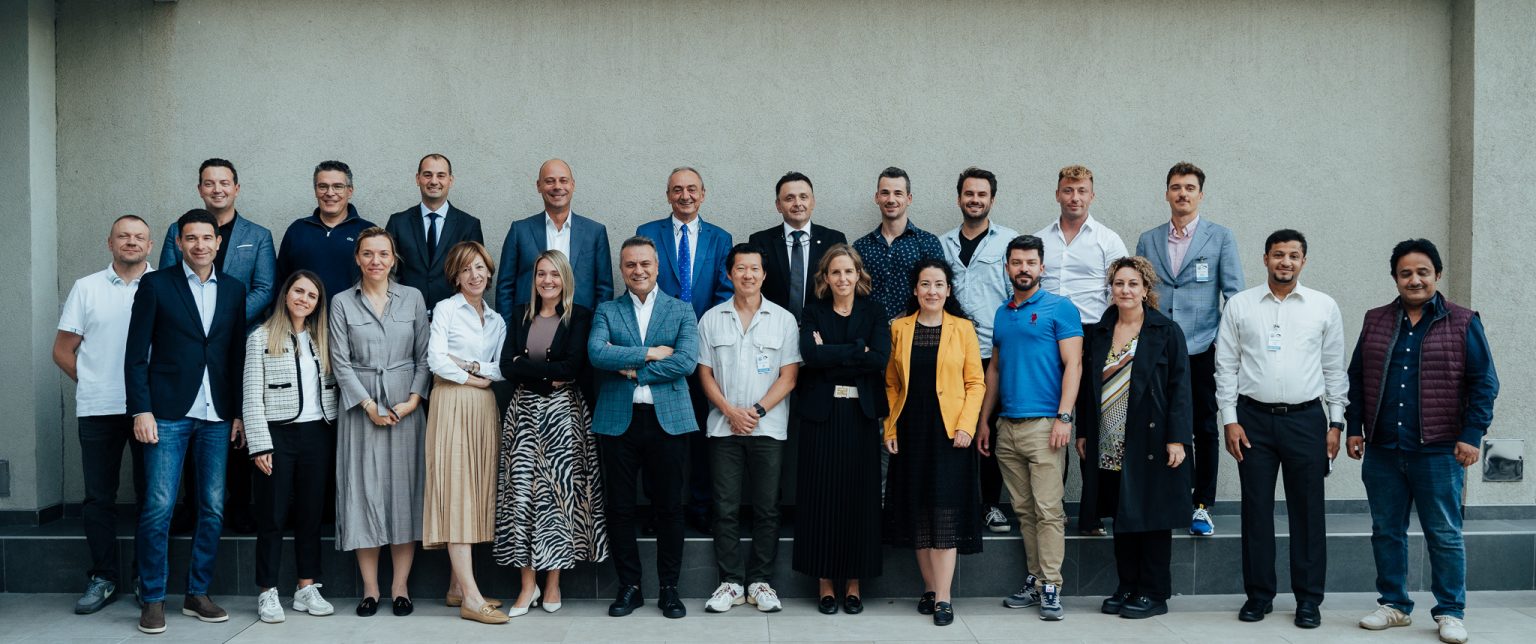Normally, ITI Fellow Narinder Dhadwal works at the Royal London Hospital as part of an implant dentistry team. As we all know, COVID-19 changed everything for everyone. Suddenly, Dr. Dhadwal was unable to practice dentistry, but was given an opportunity to work on a maternity ward.
In a short article she describes her retraining and the procedures she carried out and the sense of satisfaction she derived from helping mothers-to-be give birth under these difficult circumstances.
She reflects on the differences and similarities between her time on the maternity ward and her normal everyday life in dentistry and finds that there are strong comparisons to be made despite the very different fields of action.

22nd March 2020, UK declared official lockdown. All dental practices were forced to close and dental hospitals ceased routine treatments. Plans were put in place to establish Special dental hubs around the country for those who required emergency care. I had just recovered from peri-coronitis. This was my first experience of toothache and it confirmed the saying that toothache is the worst type of pain one can experience; I would’ve thought childbirth was worse, but apparently not. After 12 days of antibiotics I was beginning to feel a little bored and restless, I was pretty much eager just to get on with things. I received a call from one of my consultants who gave me 2 choices for redeployment: to either work in ICU (intensive care unit) or on the maternity wards. Conscious that the COVID-19 death toll was rising sharply day-by-day, I opted for the maternity wards and so it begins.
I attended day 1 of training. All staff, consultants, specialists, STR’s and DCT’s met with the clinical director at The Royal London Hospital for a quick briefing before we set off as groups to visit our respective departments. We met with the head mid wife who introduced us to various staff members and gave us a tour of all the wards: namely antenatal, postnatal, labour ward, triage, birthing centre and theatres. By the end of the day we were all on a Rota and scheduled to be on various different wards on different days. Further hands – on training was arranged shortly afterwards on cannulation and venipuncture. For someone like myself, this was a fantastic refresher, something that I had not been exposed to since my undergraduate days. We had an overview of anatomy as well as the equipment available on the wards for cannulation. We were made aware of the indications and contraindications of cannulation. In addition we were shown how to collect blood using a winged device, vacutainer, needle and syringe. It wasn’t long before the maternity unit arranged further training which was more of an OSCE format, consisting of 6 stations with groups of clinicians rotating around the stations each with different scenarios and role-plays. This was incredibly relevant and very useful in the days to come.

One important piece of equipment commonly seen worn by many women on the wards was the CTG (cardiotocography). This is a machine used for electronic fetal monitoring (EFM) which involves the use of an electronic fetal heart rate monitor used to record the baby’s heart rate using an ultrasound machine. Elastic belts are used to hold sensors against the pregnant woman’s abdomen. The monitor then records the fetal heart rate and contractions as a continuous pattern on a strip of paper. During our training we were talked through interpretation of these patterns. I later realized how incredibly important this was, especially during handovers between the night and day staff as it is often used as a quick reference to check the current status and progression of a woman’s labour as well as to monitor the baby. By looking at various different aspects of the baby’s heart rate doctors and midwives can see how the baby is coping and monitor the baby for any signs of distress, so that they can make decisions regarding when it is appropriate to intervene and deliver. Also part of our training we were involved in role plays on women with eclampsia and pre – eclampsia, what to do if a woman presents with a maternal haemorrhage, how to successfully deliver vaginal breech deliveries and how to manage shoulder dystocia deliveries. All in all, I felt the training we had received was very relevant and pitched at the right level.
My roles on the wards consisted of attending all morning handover meetings where we were briefed by the nightshift midwives and doctors in relation to each patient in various beds and their progress over night. I was often in charge of taking patient observations, which included: blood pressure, oxygen saturation, respiratory rate, pulse and temperature. We were shown how these are recorded on special charts and then repeated at regular intervals. I often helped assist midwives during membrane sweeps followed by a dose of synthetic prostaglandin drugs. If this procedure didn’t work then it was often necessary to break the patient’s waters using an amnihook into the vagina and through the cervix to tear, or break, the amniotic membranes. I also witnessed several cases where the use of an amnihook was unsuccessful and patients required to be put on an oxytocin drip to induce labour. There were several babies on the wards, which had developed jaundice (high levels of bilirubin in the baby’s blood). In such cases phototherapy is used to treat newborn jaundice by lowering the bilirubin levels in the baby’s blood through a process called photo-oxidation. Photo-oxidation adds oxygen to the bilirubin so it dissolves easily in water. This makes it easier for the baby’s liver to break down and remove the bilirubin from their blood. All babies were put on conventional phototherapy, where the baby is laid under a halogen or fluorescent lamp with their eyes covered. The aim is to expose the baby’s skin to as much light as possible. I was asked to cover the baby’s eyes prior to it starting treatment, which was quite tricky to say the least. On occasion mothers who were recovering from C-sections were unable to reach their babies to feed or change them and often I would be a spare set of hands to help these mothers. There were a couple of covid-19 mothers on the wards that required close monitoring. Sadly they were not allowed any visitors, however I felt I had a very emotionally supportive role.

My role in theatres included assisting anaesthetists in cleaning and disinfection of the skin prior to epidural administration, positioning patients and finally sticking dressings on patient’s lower backs once the epidural had been administered. I also scrubbed up and assisted with retraction of a woman’s womb in theatres whilst doctors were carrying out an assisted delivery using forceps. There is immense time pressure as doctors have 10 minutes to deliver the baby once the waters have been broken. I closely assisted midwives in the dressing and changing of babies and on several occasions administered vitamin K injections to newborns. All babies have very low levels of vitamin K in their bodies. Without vitamin K, blood cannot clot normally and the baby can develop a tendency to bleed easily.
This was, without doubt, the most rewarding and a ‘once in a lifetime’ experience of being so involved in a very different type of patient care, but what struck me the most amongst the medical teams was their team workflow. In order to function adequately and efficiently everyone needs to contribute their own individual role within this flow, this was clearly apparent on the maternity wards. To compare directly with my experience of implant dentistry at The Royal London Hospital, we have both periodontal and prosthodontic postgraduates working closely together on implant cases. Both are involved in planning. Once a case is planned, usually the periodontal postgraduate will proceed with surgical placement followed by the prosthodontics student who restores the implant. This works very well within our unit and both disciplines get to experience the complete workflow, which is vitally important to learning and development. At any stage during the patient’s journey from planning to final restoration, both periodontal and prosthodontic students are adequately trained to pick up from where another clinician may have left off. This brings me to the importance of communication and teamwork within this workflow and it was so much more apparent in a medical setting, because the team has to respond so rapidly and efficiently to changes that could be life- threatening to the mother or to the baby. On one occasion a midwife was struggling to deliver a baby, so an emergency call was raised and I was genuinely amazed to see that within seconds there were over 20 clinicians in the room from doctors, consultants to anaesthetists and midwives. In this particular case the midwife had some difficulty delivering a baby with shoulder dystocia and time was critical. I was asked to make an urgent call to the neonatal team who again arrived within seconds and started assessing the baby for any complications as a result of a difficult delivery. As we had learnt during our training the baby had to be delivered as soon as possible due to the CTG showing a low fetal heart rate and lack of oxygen, which can of course have serious implications later on in life. There were many other interesting cases I observed from female genital mutilation and the difficulties it can cause during a vaginal birth, episiotomy, repair of a 3rd degree tear, sterilisation and sadly a stillbirth.

This was genuinely an unforgettable experience for me on so many levels. I felt so proud to be able to support the NHS during the acute phase of the Covid crisis and felt both professional and personal satisfaction at being able to contribute so fully. It also highlighted that as dentists we have so many transferable skills that we take for granted within our daily dental practice. I feel privileged that my medical colleagues recognised these skills and gave me the opportunity to employ them in ways I could never have imagined before. The Covid crisis has affected us all in so many different ways. For me, my time with the Obstetric team at The Royal London Hospital will be an enduring and fond memory of this troubled time.
Narinder also did a interview about her experience: Watch full interview video






